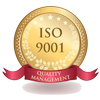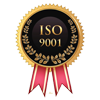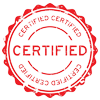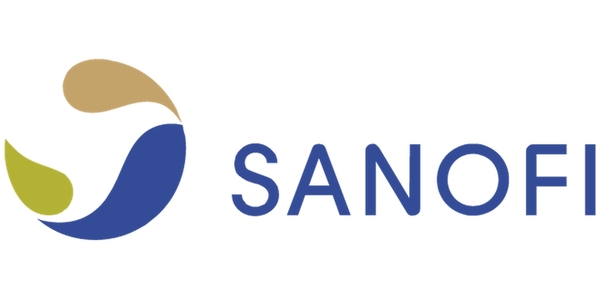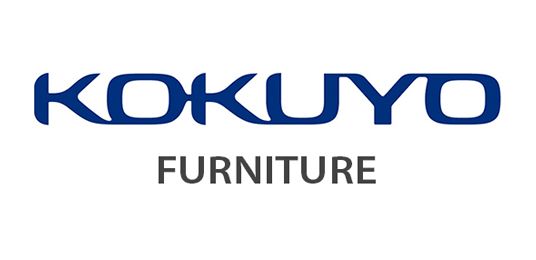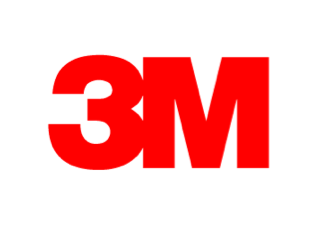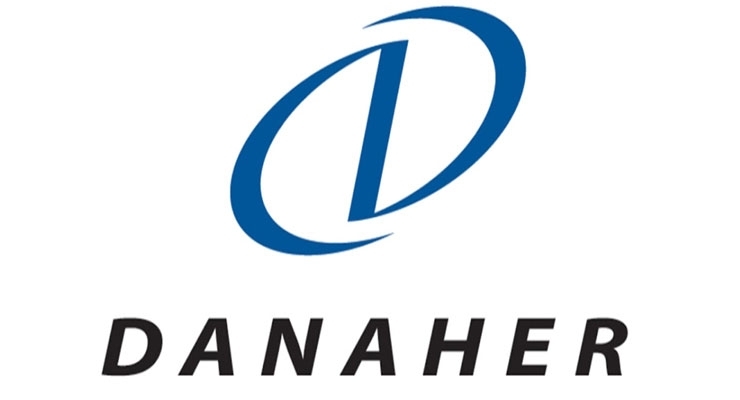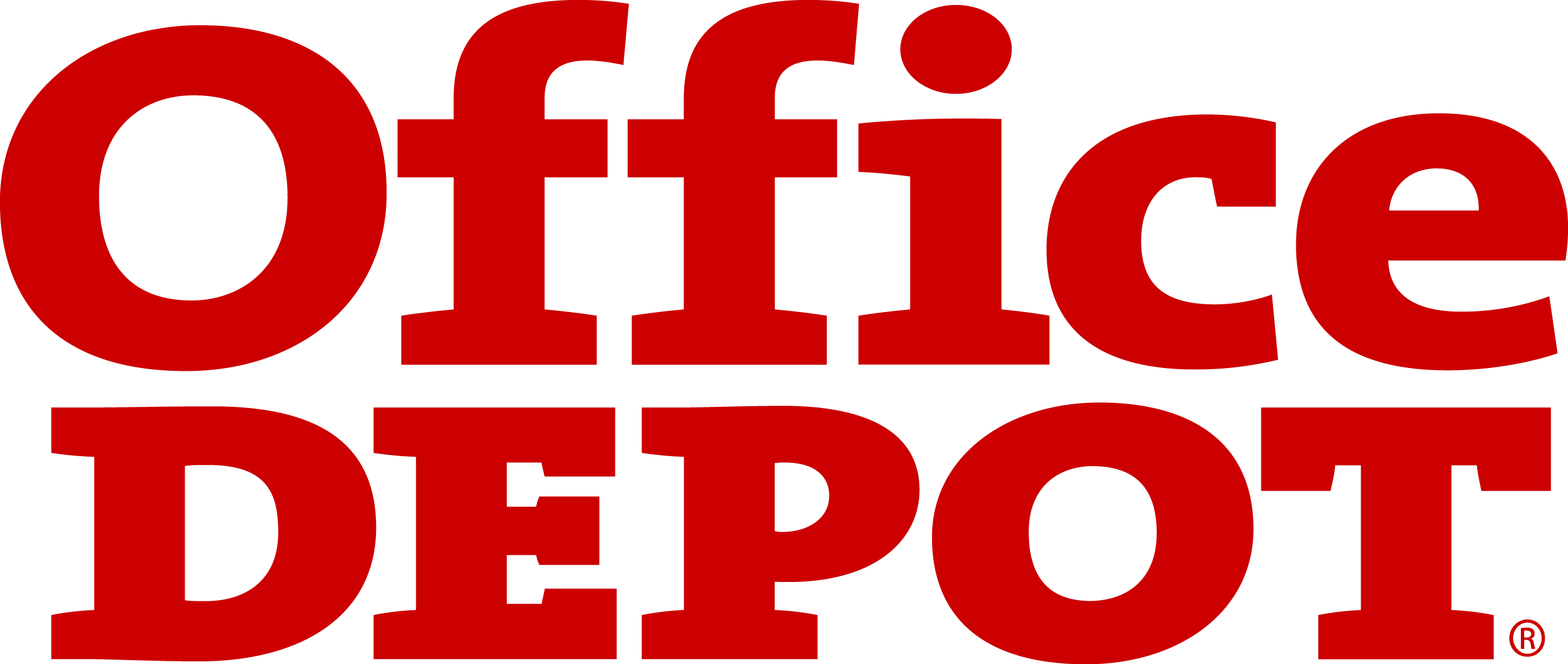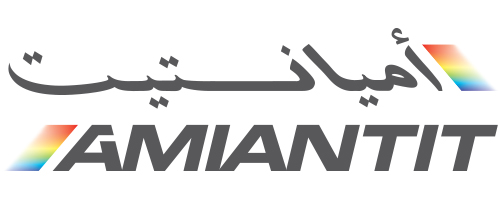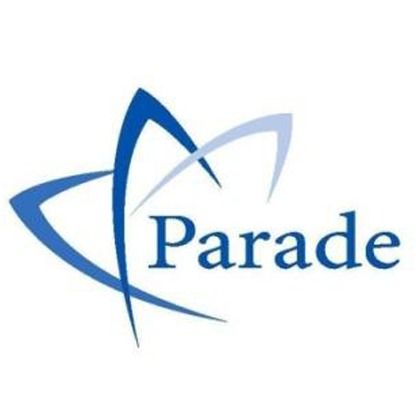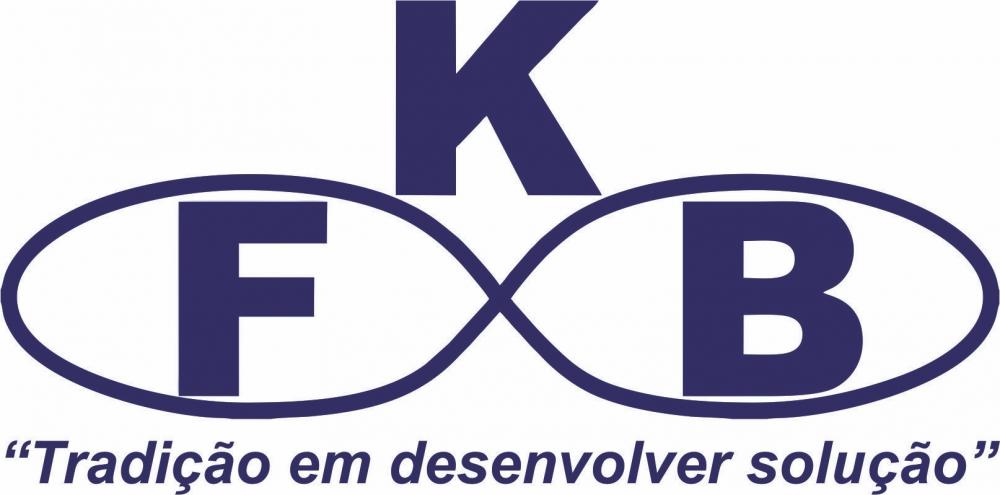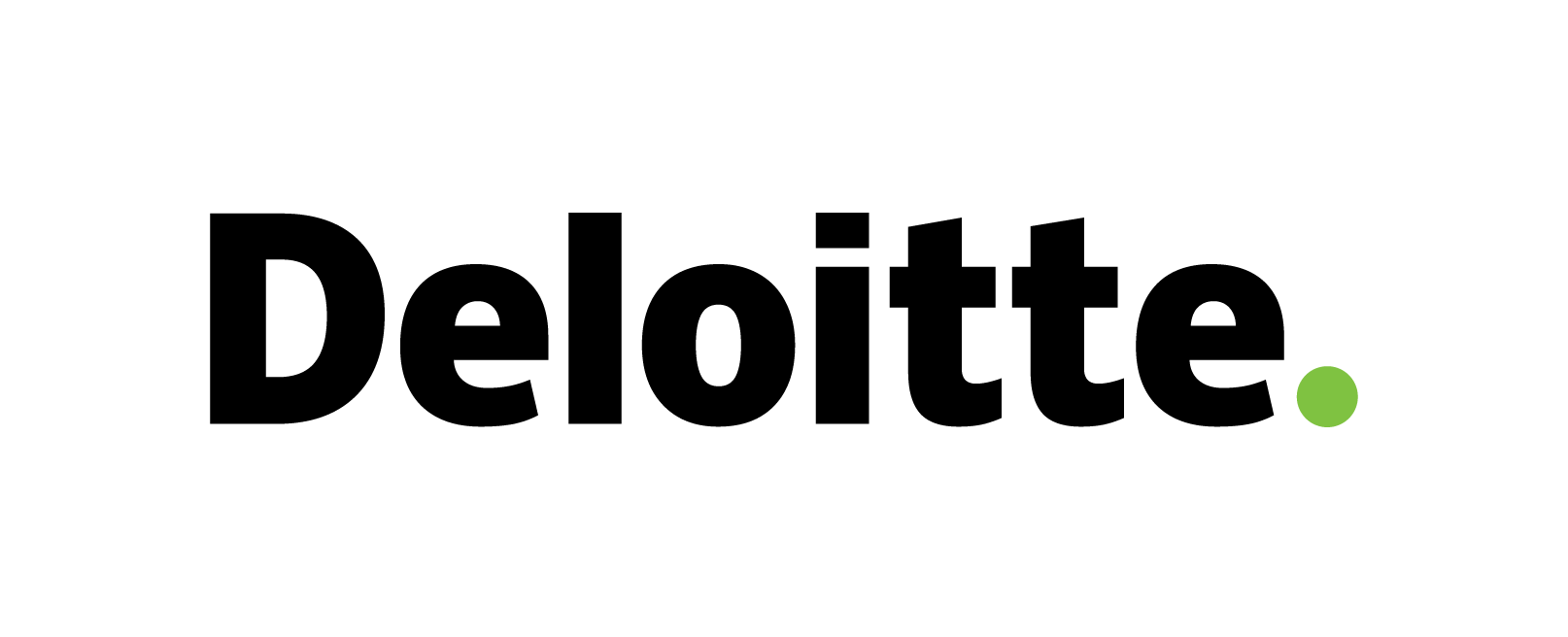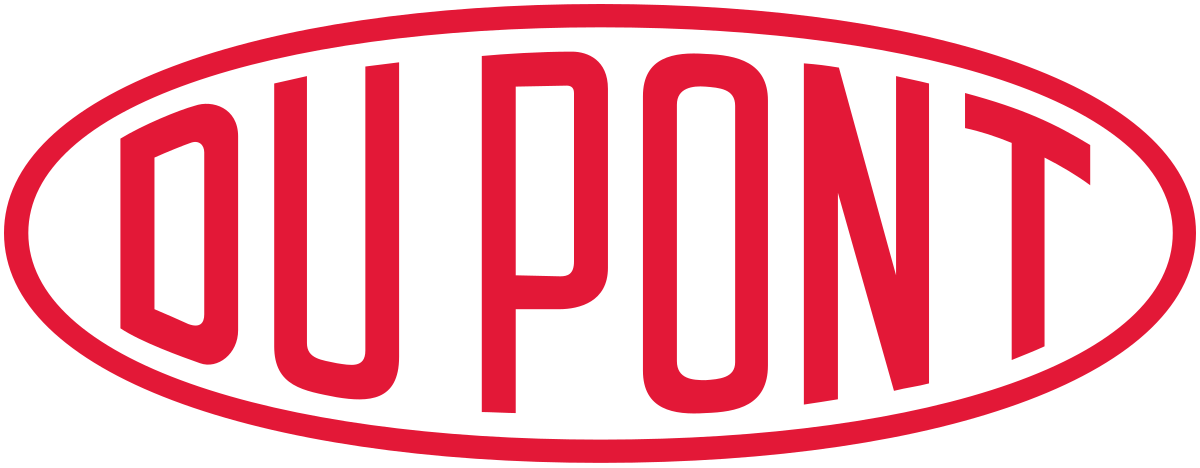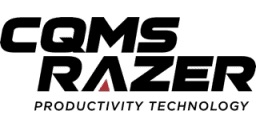Bone Graft Substitutes Market - Global Size, Share, Trends, Growth and Forecast Year ( 2023 – 2032 )
Bone Graft Substitutes Market Insights
The bone graft backups market is a fleetly growing member of the medical industry, driven by an growing population and a corresponding increase in orthopedic procedures. These backups, which can include synthetic accoutrements , natural composites, and cellular- grounded curatives, are used to repair or compound bone towel that has been damaged or lost due to injury or complaint. Some of the crucial factors driving growth in the bone graft backups market include the adding frequence of conditions similar as osteoporosis and osteoarthritis, as well as the development of new and advanced bone graft products. still, high cost and lack of payment may limit the growth of this market.
The bone Graft Substitutes market was valued at around USD 3.0 billion in 2021. With a projected CAGR 7.1% for the next 10 years, the market is likely to reach a valuation of nearly USD 6.3 billion by the end of 2032.
Bone Graft Substitutes Market Key Findings
During the projected period, a sizable CAGR is predicted for the need for bone graft backups.
The frequency of osteoporosis and osteoarthritis being added is expected to increase market.
It is also projected that increasing less invasive surgical procedure abandonment would accelerate the rise of markets.
Due of its vast patient population and advanced healthcare system, North America is predicted to dominate the market.
Due to rising healthcare costs and a huge patient population, Asia Pacific is predicted to expand at the highest CAGR throughout the forecast period.
Key players involved in the market include Zimmer Biomet, DePuy Synthes, Stryker, and others. However, the expensive expense of bone transplants and lack of financing may stop this market from expanding.
|
Bone Graft Substitutes Market: Report Scope |
|
|
Base Year Market Size |
2022 |
|
Forecast Year Market Size |
2023-2032 |
|
CAGR Value |
7.1% |
|
Segmentation |
|
|
Challenges |
|
|
Growth Drivers |
|
Bone Graft Substitutes Emerging Drugs
There are a number of emerging treatments and medications for the market for bone graft backups that are now undergoing various phases of development and clinical testing.
-Allogeneic cellular therapies: These remedies encourage bone healing and rejuvenescence by using a patient's own cells. They may prove to be less likely to reject and more likely to be successful than conventional bone transplants.
-Biomaterial-based scaffolds: These pulpits provide a physical framework for bone cells to connect to and proliferate, encouraging bone regrowth. Examples include polymeric pulpits, collagen-ground pulpits, and calcium phosphate pulpits.
-Growth factors and cytokines: By encouraging the development and isolation of bone cells, these motes aid in the promotion of bone healing and rejuvenescence.
-Gene therapy: This method encourages the proliferation and isolation of bone cells in order to enhance bone healing and rejuvenescence.
-Stem cells: These cells have the capacity to divide to form several cell types, including bone cells. They are therefore a viable choice for bone regeneration.
It's important to keep in mind that some of these emerging drugs are still in the early stages of development and will take some time to be made ready for clinical usage.
Bone Graft Substitutes Market Driving Factors
Some factors that are driving growth in the bone graft substitutes market:
- Aging population: An growing population is leading to an increase in the number of people with age- related bone diseases similar as osteoporosis and osteoarthritis, which increases the market for bone grafts.
- Increase in orthopedic procedures: The rise in the number of orthopedic procedures, similar as common reserves and chine surgeries, is also driving growth in the bone graft backups market.
- Advancements in technology: The development of new and advanced bone graft products, similar as birth and synthetic bone grafts, is helping to increase the effectiveness and ease of use of these products.
- Minimally invasive surgical procedures: The adding relinquishment of minimally invasive surgical procedures, which bear lower towel damage, is also driving growth in the market.
- Increase in healthcare expenditure: In both wealthy and developing nations, healthcare spending is rising, increasing access to medical procedures like bone transplants.
- Rise in awareness about bone disorders and treatments: The increasing awareness of bone problems and the diversity of available treatments are what are fueling the increase in market for bone graft backups.
Bone Graft Substitutes Market Challenges
Some challenges that may impede its growth of bone graft substitute market are:
- High cost: Bone graft backups can be expensive, which makes them delicate in some situations.
- Lack of reimbursement: Many insurance companies do not pay for the cost of bone graft backups, which can further restrict patient access to these therapies.
- Limited availability: Like other surgical treatments, bone transplants can come with their share of risks and issues, such as infection, bleeding, and surprise damage.
- Risk of complications: Some bone graft backups might not be as efficient as conventional bone grafts, which might restrict their application.
- Limited efficacy: Some bone graft backups might not be as efficient as conventional bone grafts, which might restrict their application.
- Stringent regulatory requirements: Due to the stringent nonsupervision requirements and clinical trial procedure, the process of obtaining a new bone graft cover product to market can be expensive and time-consuming.
- Competition with other bone healing treatments: Other bone healing methods including stem cell therapy, gene therapy, and growth hormones are competing with bone graft substitutes.
Bone Graft Substitutes Market Regional Synopsis
The bone graft substitutes market is segmented by region into North America, Europe, Asia Pacific, and the Rest of the World
North America: Due to its big patient population and well-established healthcare system, North America is expected to dominate the market. Additionally, the high abandonment of cutting-edge technology and the existence of several significant competitors in the area are fueling an increase in market in North America.
Europe: Due to its big patient population and high rate of sophisticated technology abandonment, Europe is predicted to have the second-largest market. Additionally, the growing awareness of bone ailments and the lack of available treatments are contributing to the increase in market in Europe.
Asia Pacific: Due to rising healthcare costs and a sizable patient population, Asia Pacific is predicted to see the highest CAGR throughout the forecast period. Additionally, the growing renunciation of cutting-edge technology and the increased awareness of bone illnesses are both boosting the market in the Asia Pacific area.
Rest of the World: Due to the restricted availability of cutting-edge technology and the lack of awareness about bone illnesses and available treatments in the region, it is projected that the Rest of the World will account for a minor portion of the market. It's important to remember that depending on the area and the data source, the market size and cast might change.
Bone Graft Substitutes Market Segmentation
The bone graft substitutes market can be segmented based on product type, application, and end-user.
Product Type: synthetic bone grafts, allografts, and autografts.
Application: spinal fusion, trauma, dental, and others.
End-user: hospitals, clinics, and ambulatory surgical centers.
Bone Graft Substitutes Market Key Players
Some key players operating in the bone graft substitutes market, some of the major players are:
- Medtronic
- DePuy Synthes
- Stryker
- Zimmer Biomet
- Wright Medical Group
- Orthofix Medical
- NuVasive
1. Preface
1.1. Research Methodology
1.2. Geographic Scope
1.3. Years Considered
2. Executive Summary
3. Market Overview
3.1. Bone Grafts and Substitutes Overview
3.2. Market Definition & Key Market Segments
3.3. Global Market Maturity
3.4. Porter’s Five Force Analysis
3.5. Industry Value Chain Analysis
3.6. Macro-Economic Trends
3.7. Government Regulations
3.7.1. FDA
3.7.2. Health Canada
3.7.3. CE Mark
3.7.4. Ministry of Health, Labor and Welfare (MHLW)
3.7.5. Therapeutic Goods Administration (TGA)
3.8. Reimbursement Scenario
3.8.1. U.S.
3.8.2. Europe
3.8.3. Asia-Pacific
3.8.4. LAMEA
4. Growth Drivers & Barriers in Global Bone Grafts and Substitutes Market
4.1. North America
4.2. Europe
4.3. Asia Pacific
4.4. Rest of World
5. Trends in Global Bone Grafts and Substitutes Market
5.1. North America
5.2. Europe
5.3. Asia Pacific
5.4. Rest of World
6. Global Bone Grafts and Substitutes Market Value (USD Million) Forecast & Y-o-Y Growth Analysis, 2019-2025
7. Global Bone Grafts and Substitutes Market Segmentation Analysis, By Type
7.1. Introduction
7.2. Strategic Insights
7.2.1. Market Attractiveness, By Type
7.2.2. BPS Analysis, By Type
7.3. Allograft Market Value (USD Million) Forecast & Y-o-Y Growth Analysis, 2019-2025
7.3.1. Machined Allograft Market Value (USD Million) Forecast & Y-o-Y Growth Analysis, 2019-2025
7.3.2. Demineralized Bone Matrix Market Value (USD Million) Forecast & Y-o-Y Growth Analysis, 2019-2025
7.4. Bone Graft Substitute Market Value (USD Million) Forecast & Y-o-Y Growth Analysis, 2019-2025
7.4.1. Bone Morphogenic Proteins (BMP) Market Value (USD Million) Forecast & Y-o-Y Growth Analysis, 2019-2025
7.4.2. Synthetic Bone Grafts Market Value (USD Million) Forecast & Y-o-Y Growth Analysis, 2019-2025
7.5. Cell-based Matrices Market Value (USD Million) Forecast & Y-o-Y Growth Analysis, 2019-2025
8. Global Bone Grafts and Substitutes Market Segmentation Analysis, By Application
8.1. Introduction
8.2. Strategic Insights
8.2.1. Market Attractiveness, By Application
8.2.2. BPS Analysis, By Application
8.3. Joint Reconstruction Market Value (USD Million) Forecast & Y-o-Y Growth Analysis, 2019-2025
8.4. Dental Bone Grafting Market Value (USD Million) Forecast & Y-o-Y Growth Analysis, 2019-2025
8.5. Spinal Fusion Market Value (USD Million) Forecast & Y-o-Y Growth Analysis, 2019-2025
8.6. Craniomaxillofacial Market Value (USD Million) Forecast & Y-o-Y Growth Analysis, 2019-2025
8.7. Trauma Market Value (USD Million) Forecast & Y-o-Y Growth Analysis, 2019-2025
8.8. Foot and Ankle Market Value (USD Million) Forecast & Y-o-Y Growth Analysis, 2019-2025
8.9. Others Market Value (USD Million) Forecast & Y-o-Y Growth Analysis, 2019-2025
9. Global Bone Grafts and Substitutes Market Segmentation Analysis, By End User
9.1. Introduction
9.2. Strategic Insights
9.2.1. Market Attractiveness, By End User
9.2.2. BPS Analysis, By End User
9.3. Hospitals Market Value (USD Million) Forecast & Y-o-Y Growth Analysis, 2019-2025
9.4. Surgical Centers Market Value (USD Million) Forecast & Y-o-Y Growth Analysis, 2019-2025
9.5. Clinics Market Value (USD Million) Forecast & Y-o-Y Growth Analysis, 2019-2025
9.6. Others Market Value (USD Million) Forecast & Y-o-Y Growth Analysis, 2019-2025
10. Geographical Analysis
10.1. Introduction
10.2. North America Bone Grafts and Substitutes Market Value (USD Million) Forecast & Y-o-Y Growth Analysis, 2019-2025
10.2.1. By Type
10.2.1.1. Introduction
10.2.1.2. Strategic Insights
10.2.1.2.1. Market Attractiveness, By Type
10.2.1.2.2. BPS Analysis, By Type
10.2.1.3. Allograft Market Value (USD Million) Forecast & Y-o-Y Growth Analysis, 2019-2025
10.2.1.3.1. Machined Allograft Market Value (USD Million) Forecast & Y-o-Y Growth Analysis, 2019-2025
10.2.1.3.2. Demineralized Bone Matrix Market Value (USD Million) Forecast & Y-o-Y Growth Analysis, 2019-2025
10.2.1.4. Bone Graft Substitute Market Value (USD Million) Forecast & Y-o-Y Growth Analysis, 2019-2025
10.2.1.4.1. Bone Morphogenic Proteins (BMP) Market Value (USD Million) Forecast & Y-o-Y Growth Analysis, 2019-2025
10.2.1.4.2. Synthetic Bone Grafts Market Value (USD Million) Forecast & Y-o-Y Growth Analysis, 2019-2025
10.2.1.5. Cell-based Matrices Market Value (USD Million) Forecast & Y-o-Y Growth Analysis, 2019-2025
10.2.2. By Application
10.2.2.1. Introduction
10.2.2.2. Strategic Insights
10.2.2.2.1. Market Attractiveness, By Application
10.2.2.2.2. BPS Analysis, By Application
10.2.2.3. Joint Reconstruction Market Value (USD Million) Forecast & Y-o-Y Growth Analysis, 2019-2025
10.2.2.4. Dental Bone Grafting Market Value (USD Million) Forecast & Y-o-Y Growth Analysis, 2019-2025
10.2.2.5. Spinal Fusion Market Value (USD Million) Forecast & Y-o-Y Growth Analysis, 2019-2025
10.2.2.6. Craniomaxillofacial Market Value (USD Million) Forecast & Y-o-Y Growth Analysis, 2019-2025
10.2.2.7. Trauma Market Value (USD Million) Forecast & Y-o-Y Growth Analysis, 2019-2025
10.2.2.8. Foot and Ankle Market Value (USD Million) Forecast & Y-o-Y Growth Analysis, 2019-2025
10.2.2.9. Others Market Value (USD Million) Forecast & Y-o-Y Growth Analysis, 2019-2025
10.2.3. By End User
10.2.3.1. Introduction
10.2.3.2. Strategic Insights
10.2.3.2.1. Market Attractiveness, By End User
10.2.3.2.2. BPS Analysis, By End User
10.2.3.3. Hospitals Market Value (USD Million) Forecast & Y-o-Y Growth Analysis, 2019-2025
10.2.3.4. Surgical Centers Market Value (USD Million) Forecast & Y-o-Y Growth Analysis, 2019-2025
10.2.3.5. Clinics Market Value (USD Million) Forecast & Y-o-Y Growth Analysis, 2019-2025
10.2.3.6. Others Market Value (USD Million) Forecast & Y-o-Y Growth Analysis, 2019-2025
10.2.4. By Country
10.2.4.1. Introduction
10.2.4.2. Strategic Insights
10.2.4.2.1. Market Attractiveness, By Country
10.2.4.2.2. BPS Analysis, By Country
10.2.4.3. U.S. Bone Grafts and Substitutes Market Value (USD Million) Forecast & Y-o-Y Growth Analysis, 2019-2025
10.2.4.4. Canada Bone Grafts and Substitutes Market Value (USD Million) Forecast & Y-o-Y Growth Analysis, 2019-2025
10.3. Europe Bone Grafts and Substitutes Market Value (USD Million) Forecast & Y-o-Y Growth Analysis, 2019-2025
10.3.1. By Type
10.3.1.1. Introduction
10.3.1.2. Strategic Insights
10.3.1.2.1. Market Attractiveness, By Type
10.3.1.2.2. BPS Analysis, By Type
10.3.1.3. Allograft Market Value (USD Million) Forecast & Y-o-Y Growth Analysis, 2019-2025
10.3.1.3.1. Machined Allograft Market Value (USD Million) Forecast & Y-o-Y Growth Analysis, 2019-2025
10.3.1.3.2. Demineralized Bone Matrix Market Value (USD Million) Forecast & Y-o-Y Growth Analysis, 2019-2025
10.3.1.4. Bone Graft Substitute Market Value (USD Million) Forecast & Y-o-Y Growth Analysis, 2019-2025
10.3.1.4.1. Bone Morphogenic Proteins (BMP) Market Value (USD Million) Forecast & Y-o-Y Growth Analysis, 2019-2025
10.3.1.4.2. Synthetic Bone Grafts Market Value (USD Million) Forecast & Y-o-Y Growth Analysis, 2019-2025
10.3.1.5. Cell-based Matrices Market Value (USD Million) Forecast & Y-o-Y Growth Analysis, 2019-2025
10.3.2. By Application
10.3.2.1. Introduction
10.3.2.2. Strategic Insights
10.3.2.2.1. Market Attractiveness, By Application
10.3.2.2.2. BPS Analysis, By Application
10.3.2.3. Joint Reconstruction Market Value (USD Million) Forecast & Y-o-Y Growth Analysis, 2019-2025
10.3.2.4. Dental Bone Grafting Market Value (USD Million) Forecast & Y-o-Y Growth Analysis, 2019-2025
10.3.2.5. Spinal Fusion Market Value (USD Million) Forecast & Y-o-Y Growth Analysis, 2019-2025
10.3.2.6. Craniomaxillofacial Market Value (USD Million) Forecast & Y-o-Y Growth Analysis, 2019-2025
10.3.2.7. Trauma Market Value (USD Million) Forecast & Y-o-Y Growth Analysis, 2019-2025
10.3.2.8. Foot and Ankle Market Value (USD Million) Forecast & Y-o-Y Growth Analysis, 2019-2025
10.3.2.9. Others Market Value (USD Million) Forecast & Y-o-Y Growth Analysis, 2019-2025
10.3.3. By End User
10.3.3.1. Introduction
10.3.3.2. Strategic Insights
10.3.3.2.1. Market Attractiveness, By End User
10.3.3.2.2. BPS Analysis, By End User
10.3.3.3. Hospitals Market Value (USD Million) Forecast & Y-o-Y Growth Analysis, 2019-2025
10.3.3.4. Surgical Centers Market Value (USD Million) Forecast & Y-o-Y Growth Analysis, 2019-2025
10.3.3.5. Clinics Market Value (USD Million) Forecast & Y-o-Y Growth Analysis, 2019-2025
10.3.3.6. Others Market Value (USD Million) Forecast & Y-o-Y Growth Analysis, 2019-2025
10.3.4. By Country
10.3.4.1. Introduction
10.3.4.2. Strategic Insights
10.3.4.2.1. Market Attractiveness, By Country
10.3.4.2.2. BPS Analysis, By Country
10.3.4.3. Germany Bone Grafts and Substitutes Market Value (USD Million) Forecast & Y-o-Y Growth Analysis, 2019-2025
10.3.4.4. United Kingdom Bone Grafts and Substitutes Market Value (USD Million) Forecast & Y-o-Y Growth Analysis, 2019-2025
10.3.4.5. France Bone Grafts and Substitutes Market Value (USD Million) Forecast & Y-o-Y Growth Analysis, 2019-2025
10.3.4.6. Italy Bone Grafts and Substitutes Market Value (USD Million) Forecast & Y-o-Y Growth Analysis, 2019-2025
10.3.4.7. Spain Bone Grafts and Substitutes Market Value (USD Million) Forecast & Y-o-Y Growth Analysis, 2019-2025
10.3.4.8. Russia Bone Grafts and Substitutes Market Value (USD Million) Forecast & Y-o-Y Growth Analysis, 2019-2025
10.3.4.9. Rest of Europe Bone Grafts and Substitutes Market Value (USD Million) Forecast & Y-o-Y Growth Analysis, 2019-2025
10.4. Asia Pacific Bone Grafts and Substitutes Market Value (USD Million) Forecast & Y-o-Y Growth Analysis, 2019-2025
10.4.1. By Type
10.4.1.1. Introduction
10.4.1.2. Strategic Insights
10.4.1.2.1. Market Attractiveness, By Type
10.4.1.2.2. BPS Analysis, By Type
10.4.1.3. Allograft Market Value (USD Million) Forecast & Y-o-Y Growth Analysis, 2019-2025
10.4.1.3.1. Machined Allograft Market Value (USD Million) Forecast & Y-o-Y Growth Analysis, 2019-2025
10.4.1.3.2. Demineralized Bone Matrix Market Value (USD Million) Forecast & Y-o-Y Growth Analysis, 2019-2025
10.4.1.4. Bone Graft Substitute Market Value (USD Million) Forecast & Y-o-Y Growth Analysis, 2019-2025
10.4.1.4.1. Bone Morphogenic Proteins (BMP) Market Value (USD Million) Forecast & Y-o-Y Growth Analysis, 2019-2025
10.4.1.4.2. Synthetic Bone Grafts Market Value (USD Million) Forecast & Y-o-Y Growth Analysis, 2019-2025
10.4.1.5. Cell-based Matrices Market Value (USD Million) Forecast & Y-o-Y Growth Analysis, 2019-2025
10.4.2. By Application
10.4.2.1. Introduction
10.4.2.2. Strategic Insights
10.4.2.2.1. Market Attractiveness, By Application
10.4.2.2.2. BPS Analysis, By Application
10.4.2.3. Joint Reconstruction Market Value (USD Million) Forecast & Y-o-Y Growth Analysis, 2019-2025
10.4.2.4. Dental Bone Grafting Market Value (USD Million) Forecast & Y-o-Y Growth Analysis, 2019-2025
10.4.2.5. Spinal Fusion Market Value (USD Million) Forecast & Y-o-Y Growth Analysis, 2019-2025
10.4.2.6. Craniomaxillofacial Market Value (USD Million) Forecast & Y-o-Y Growth Analysis, 2019-2025
10.4.2.7. Trauma Market Value (USD Million) Forecast & Y-o-Y Growth Analysis, 2019-2025
10.4.2.8. Foot and Ankle Market Value (USD Million) Forecast & Y-o-Y Growth Analysis, 2019-2025
10.4.2.9. Others Market Value (USD Million) Forecast & Y-o-Y Growth Analysis, 2019-2025
10.4.3. By End User
10.4.3.1. Introduction
10.4.3.2. Strategic Insights
10.4.3.2.1. Market Attractiveness, By End User
10.4.3.2.2. BPS Analysis, By End User
10.4.3.3. Hospitals Market Value (USD Million) Forecast & Y-o-Y Growth Analysis, 2019-2025
10.4.3.4. Surgical Centers Market Value (USD Million) Forecast & Y-o-Y Growth Analysis, 2019-2025
10.4.3.5. Clinics Market Value (USD Million) Forecast & Y-o-Y Growth Analysis, 2019-2025
10.4.3.6. Others Market Value (USD Million) Forecast & Y-o-Y Growth Analysis, 2019-2025
10.4.4. By Country
10.4.4.1. Introduction
10.4.4.2. Strategic Insights
10.4.4.2.1. Market Attractiveness, By Country
10.4.4.2.2. BPS Analysis, By Country
10.4.4.3. China Bone Grafts and Substitutes Market Value (USD Million) Forecast & Y-o-Y Growth Analysis, 2019-2025
10.4.4.4. India Bone Grafts and Substitutes Market Value (USD Million) Forecast & Y-o-Y Growth Analysis, 2019-2025
10.4.4.5. Japan Bone Grafts and Substitutes Market Value (USD Million) Forecast & Y-o-Y Growth Analysis, 2019-2025
10.4.4.6. South Korea Bone Grafts and Substitutes Market Value (USD Million) Forecast & Y-o-Y Growth Analysis, 2019-2025
10.4.4.7. Indonesia Bone Grafts and Substitutes Market Value (USD Million) Forecast & Y-o-Y Growth Analysis, 2019-2025
10.4.4.8. Australia Bone Grafts and Substitutes Market Value (USD Million) Forecast & Y-o-Y Growth Analysis, 2019-2025
10.4.4.9. Rest of Asia Pacific Bone Grafts and Substitutes Market Value (USD Million) Forecast & Y-o-Y Growth Analysis, 2019-2025
10.5. Latin America Bone Grafts and Substitutes Market Value (USD Million) Forecast & Y-o-Y Growth Analysis, 2019-2025
10.5.1. By Type
10.5.1.1. Introduction
10.5.1.2. Strategic Insights
10.5.1.2.1. Market Attractiveness, By Type
10.5.1.2.2. BPS Analysis, By Type
10.5.1.3. Allograft Market Value (USD Million) Forecast & Y-o-Y Growth Analysis, 2019-2025
10.5.1.3.1. Machined Allograft Market Value (USD Million) Forecast & Y-o-Y Growth Analysis, 2019-2025
10.5.1.3.2. Demineralized Bone Matrix Market Value (USD Million) Forecast & Y-o-Y Growth Analysis, 2019-2025
10.5.1.4. Bone Graft Substitute Market Value (USD Million) Forecast & Y-o-Y Growth Analysis, 2019-2025
10.5.1.4.1. Bone Morphogenic Proteins (BMP) Market Value (USD Million) Forecast & Y-o-Y Growth Analysis, 2019-2025
10.5.1.4.2. Synthetic Bone Grafts Market Value (USD Million) Forecast & Y-o-Y Growth Analysis, 2019-2025
10.5.1.5. Cell-based Matrices Market Value (USD Million) Forecast & Y-o-Y Growth Analysis, 2019-2025
10.5.2. By Application
10.5.2.1. Introduction
10.5.2.2. Strategic Insights
10.5.2.2.1. Market Attractiveness, By Application
10.5.2.2.2. BPS Analysis, By Application
10.5.2.3. Joint Reconstruction Market Value (USD Million) Forecast & Y-o-Y Growth Analysis, 2019-2025
10.5.2.4. Dental Bone Grafting Market Value (USD Million) Forecast & Y-o-Y Growth Analysis, 2019-2025
10.5.2.5. Spinal Fusion Market Value (USD Million) Forecast & Y-o-Y Growth Analysis, 2019-2025
10.5.2.6. Craniomaxillofacial Market Value (USD Million) Forecast & Y-o-Y Growth Analysis, 2019-2025
10.5.2.7. Trauma Market Value (USD Million) Forecast & Y-o-Y Growth Analysis, 2019-2025
10.5.2.8. Foot and Ankle Market Value (USD Million) Forecast & Y-o-Y Growth Analysis, 2019-2025
10.5.2.9. Others Market Value (USD Million) Forecast & Y-o-Y Growth Analysis, 2019-2025
10.5.3. By End User
10.5.3.1. Introduction
10.5.3.2. Strategic Insights
10.5.3.2.1. Market Attractiveness, By End User
10.5.3.2.2. BPS Analysis, By End User
10.5.3.3. Hospitals Market Value (USD Million) Forecast & Y-o-Y Growth Analysis, 2019-2025
10.5.3.4. Surgical Centers Market Value (USD Million) Forecast & Y-o-Y Growth Analysis, 2019-2025
10.5.3.5. Clinics Market Value (USD Million) Forecast & Y-o-Y Growth Analysis, 2019-2025
10.5.3.6. Others Market Value (USD Million) Forecast & Y-o-Y Growth Analysis, 2019-2025
10.5.4. By Country
10.5.4.1. Introduction
10.5.4.2. Strategic Insights
10.5.4.2.1. Market Attractiveness, By Country
10.5.4.2.2. BPS Analysis, By Country
10.5.4.3. Brazil Bone Grafts and Substitutes Market Value (USD Million) Forecast & Y-o-Y Growth Analysis, 2019-2025
10.5.4.4. Mexico Bone Grafts and Substitutes Market Value (USD Million) Forecast & Y-o-Y Growth Analysis, 2019-2025
10.5.4.5. Rest of Latin America Bone Grafts and Substitutes Market Value (USD Million) Forecast & Y-o-Y Growth Analysis, 2019-2025
10.6. Middle East & Africa Bone Grafts and Substitutes Market Value (USD Million) Forecast & Y-o-Y Growth Analysis, 2019-2025
10.6.1. By Type
10.6.1.1. Introduction
10.6.1.2. Strategic Insights
10.6.1.2.1. Market Attractiveness, By Type
10.6.1.2.2. BPS Analysis, By Type
10.6.1.3. Allograft Market Value (USD Million) Forecast & Y-o-Y Growth Analysis, 2019-2025
10.6.1.3.1. Machined Allograft Market Value (USD Million) Forecast & Y-o-Y Growth Analysis, 2019-2025
10.6.1.3.2. Demineralized Bone Matrix Market Value (USD Million) Forecast & Y-o-Y Growth Analysis, 2019-2025
10.6.1.4. Bone Graft Substitute Market Value (USD Million) Forecast & Y-o-Y Growth Analysis, 2019-2025
10.6.1.4.1. Bone Morphogenic Proteins (BMP) Market Value (USD Million) Forecast & Y-o-Y Growth Analysis, 2019-2025
10.6.1.4.2. Synthetic Bone Grafts Market Value (USD Million) Forecast & Y-o-Y Growth Analysis, 2019-2025
10.6.1.5. Cell-based Matrices Market Value (USD Million) Forecast & Y-o-Y Growth Analysis, 2019-2025
10.6.2. By Application
10.6.2.1. Introduction
10.6.2.2. Strategic Insights
10.6.2.2.1. Market Attractiveness, By Application
10.6.2.2.2. BPS Analysis, By Application
10.6.2.3. Joint Reconstruction Market Value (USD Million) Forecast & Y-o-Y Growth Analysis, 2019-2025
10.6.2.4. Dental Bone Grafting Market Value (USD Million) Forecast & Y-o-Y Growth Analysis, 2019-2025
10.6.2.5. Spinal Fusion Market Value (USD Million) Forecast & Y-o-Y Growth Analysis, 2019-2025
10.6.2.6. Craniomaxillofacial Market Value (USD Million) Forecast & Y-o-Y Growth Analysis, 2019-2025
10.6.2.7. Trauma Market Value (USD Million) Forecast & Y-o-Y Growth Analysis, 2019-2025
10.6.2.8. Foot and Ankle Market Value (USD Million) Forecast & Y-o-Y Growth Analysis, 2019-2025
10.6.2.9. Others Market Value (USD Million) Forecast & Y-o-Y Growth Analysis, 2019-2025
10.6.3. By End User
10.6.3.1. Introduction
10.6.3.2. Strategic Insights
10.6.3.2.1. Market Attractiveness, By End User
10.6.3.2.2. BPS Analysis, By End User
10.6.3.3. Hospitals Market Value (USD Million) Forecast & Y-o-Y Growth Analysis, 2019-2025
10.6.3.4. Surgical Centers Market Value (USD Million) Forecast & Y-o-Y Growth Analysis, 2019-2025
10.6.3.5. Clinics Market Value (USD Million) Forecast & Y-o-Y Growth Analysis, 2019-2025
10.6.3.6. Others Market Value (USD Million) Forecast & Y-o-Y Growth Analysis, 2019-2025
10.6.4. By Geography
10.6.4.1. Introduction
10.6.4.2. Strategic Insights
10.6.4.2.1. Market Attractiveness, By Geography
10.6.4.2.2. BPS Analysis, By Geography
10.6.4.3. GCC Bone Grafts and Substitutes Market Value (USD Million) Forecast & Y-o-Y Growth Analysis, 2019-2025
10.6.4.4. North Africa Bone Grafts and Substitutes Market Value (USD Million) Forecast & Y-o-Y Growth Analysis, 2019-2025
10.6.4.5. South Africa Bone Grafts and Substitutes Market Value (USD Million) Forecast & Y-o-Y Growth Analysis, 2019-2025
10.6.4.6. Rest of Middle East & Africa Bone Grafts and Substitutes Market Value (USD Million) Forecast & Y-o-Y Growth Analysis, 2019-2025
11. Competitive Landscape
11.1. Market Share of Key Players in Bone Grafts and Substitutes Market
11.2. Bone Grafts and Substitutes Company Analysis
11.2.1. Arthrex, Inc.
11.2.1.1. Company Overview
11.2.1.2. Product Offered
11.2.1.3. Business Strategy
11.2.1.4. Financials
11.2.1.5. SWOT Analysis
11.2.1.6. Key Achievements & Developments
11.2.2. Baxter International Inc.
11.2.3. Integra LifeSciences Holdings Corporation
11.2.4. Johnson & Johnson (DePuy Synthes)
11.2.5. Medtronic Plc.
11.2.6. Musculoskeletal Transplant Foundation
11.2.7. NuVasive, Inc.
11.2.8. Stryker Corporation
11.2.9. Wright Medical Group N.V.
11.2.10. Zimmer Biomet Holdings, Inc.
11.2.11. Other Major & Niche Players

Need Customized Report for Your Business ?
Utilize the Power of Customized Research Aligned with Your Business Goals
Request for Customized Report- Quick Contact -
- ISO Certified Logo -
